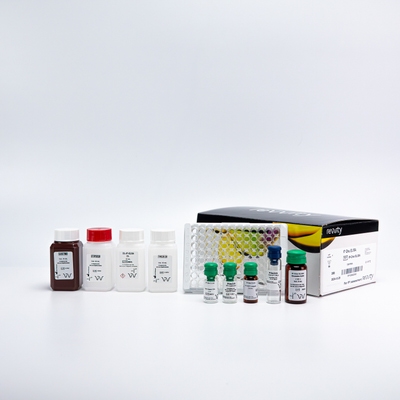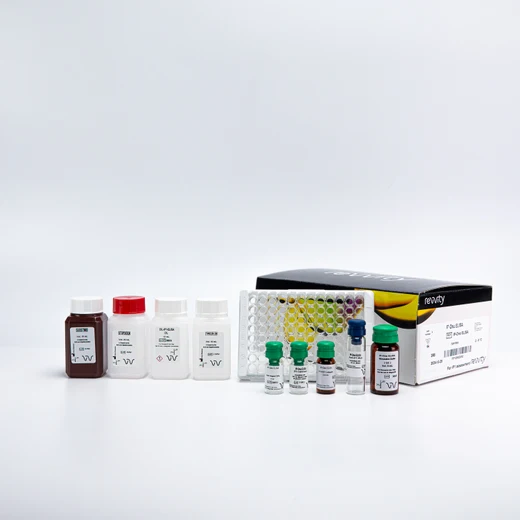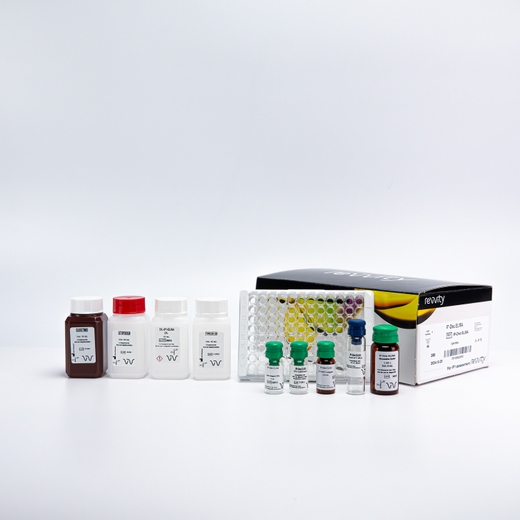

HTRF IP-One Detection Kit, 96 Assay Points


HTRF IP-One Detection Kit, 96 Assay Points






This ELISA detects the accumulation of inositol monophosphate, a metabolite produced following phospholipase C activation and used as a proxy of Gq activation
| Feature | Specification |
|---|---|
| Application | Second Messenger Detection |
| Dynamic Range | 10 - 3,000 nM |
| Limit of Detection | 10 nM |
| Sample Volume | 50 µL |
This ELISA detects the accumulation of inositol monophosphate, a metabolite produced following phospholipase C activation and used as a proxy of Gq activation



HTRF IP-One Detection Kit, 96 Assay Points



HTRF IP-One Detection Kit, 96 Assay Points



Product information
Overview
GPCR Gq stimulation is known to induce phospholipase C (PLC) activation and trigger Inositol phosphate (IP) cascade.
IP1, a downstream metabolite of IP3, accumulates in cells following Gq receptor activation and is stable in presence of LiCl, making it an ideal GPCR (Gq) functional assay.
Revvity has developed a monoclonal antibody-based IP-One ELISA to enable simplified and highly accurate measurement of IP1.
Specifications
| Application |
Second Messenger Detection
|
|---|---|
| Brand |
HTRF
|
| Detection Modality |
HTRF
|
| Dynamic Range |
10 - 3,000 nM
|
| Limit of Detection |
10 nM
|
| Product Group |
Kit
|
| Sample Volume |
50 µL
|
| Shipping Conditions |
Shipped Ambient
|
| Target Class |
GPCR
|
| Technology |
TR-FRET
|
| Therapeutic Area |
Cardiovascular
Infectious Diseases
Metabolism/Diabetes
NASH/Fibrosis
Neuroscience
Oncology & Inflammation
Rare Diseases
|
| Unit Size |
96 Assay Points
|
Video gallery

HTRF IP-One Detection Kit, 96 Assay Points

HTRF IP-One Detection Kit, 96 Assay Points

Citations
How it works
Assay principle
IP-One ELISA is a competitive immunoassay which uses IP1-HRP and an anti-IP1 monoclonal antibody. The kit comes with 96-well microplates pre-coated with an anti-mouse antibody. Cells are stimulated in the presence of LiCl, causing the accumulation of IP1 upon receptor activation. The protocol consists of two steps following cell stimulation: addition of ELISA components and addition of TMB, the HRP substrate. The HRP reaction is stopped and the optical density (OD) read at 450nm.

Assay protocol

Assay details
Specifications
IP1, a downstream metabolite of IP3, accumulates in cells following Gq receptor activation.
It is stable in the presence of LiCl, making it ideal for GPCR (Gq) functional assay.

Detection limit |
10 nM |
|---|---|
| Dynamic range | 10-3000 nM |
| EC50 | 110 nM |
| Specificity | No cross-reactivity with 50 µM Myo-inositol, PIP2, IP2, IP3, IP4 or PIP3 |
Assay validation
Assay performance
The Cisbio IP-One ELISA is compatible with cell lysates, enabling live cell functional assays.
Cells can be stimulated using a variety of plate formats prior to the IP-One ELISA detection steps.
This figure shows the results of an IP-One ELISA performed on cells stimulated in either a 24- or 96-well format. Cells were lysed and then transferred to the ELISA plate provided in the kit. We used 80,000 cells per well in the 96-well plates and 400,000 cells per well in the 24-well format.
Both cell stimulation formats produced similar results, with low standard deviations.

Resources
Are you looking for resources, click on the resource type to explore further.
The essential guide to Gq signaling
This White Paper aims to provide you with the information related to the Inositol phosphate...


How can we help you?
We are here to answer your questions.






























